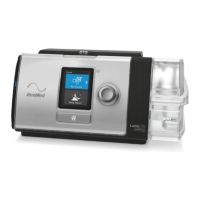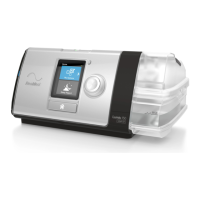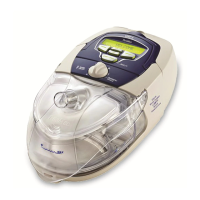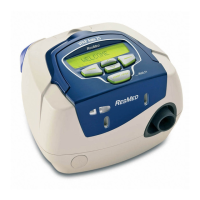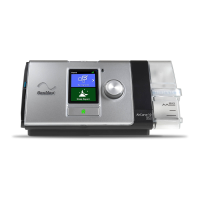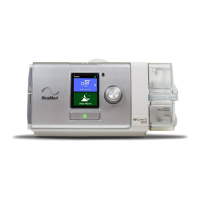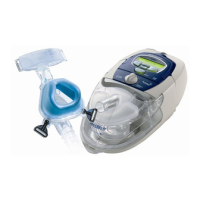2
• bloating
• ear or sinus discomfort
• eye irritation
• skin rashes.
Troubleshooting
If there is a problem, try the following suggestions. If the problem cannot be solved, contact your
equipment supplier or ResMed. Do not attempt to open the device(s).
Problem/possible cause Solution
No display
Power is not connected. Ensure the power cable is connected and the power outlet
(if available) is on.
The DC plug is partially inserted into
the back of the device or inserted too
slowly.
Fully insert the DC plug.
Insufficient air delivered from the VPAP device
Ramp time is in use. Wait for air pressure to build up or change ramp time.
Air filter is dirty. Replace air filter.
Air tubing is not connected properly. Check air tubing.
Air tubing is blocked, pinched or
punctured.
Unblock or free the air tubing. Check the air tubing for
punctures.
Mask and headgear are not positioned
correctly.
Adjust position of mask and headgear.
Incorrect air tubing selected. If you are using the SlimLine, Standard or 3m air tubing
ensure that you have the correct air tubing selected via the
menu.
Device does not start when you breathe into the mask
Breath is not deep enough to trigger
SmartStart/Stop.
Take a deep breath in and out through the mask.
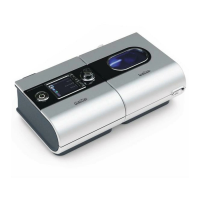
